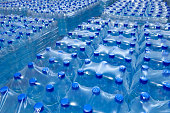Mumbai: In the realm of packaged water in India, the options seem endless, and the choices, are daunting. As the demand for safe and convenient drinking water continues to surge, a careful examination becomes imperative. This article delves into the nuances of distinguishing between mineral water and bottled drinking water in India, the proliferation of dubious brands, the success of trusted names, and essential steps for consumers to safeguard their health.
Market Dynamics:
India’s packaged water market has witnessed an exponential boom in recent years, fueled by factors like urbanization, increasing disposable income, and concerns about water contamination. According to market reports, the packaged drinking water market in India is projected to reach substantial figures, with a compound annual growth rate (CAGR) exceeding 15%. This surge in demand has led to a flood of players entering the market, resulting in both opportunities and challenges for consumers.
Dubious Brands: Navigating the Murky Waters:
With the growth in the packaged water sector, there has been an unfortunate proliferation of dubious brands, compromising the quality and safety of the water consumed by unsuspecting consumers. Instances of substandard purification processes, false claims on labels, and even the use of unauthorized water sources have raised concerns about the authenticity of certain brands.
Consumers must exercise caution and be discerning while selecting bottled water, especially from local or lesser-known brands. The lack of stringent regulations in some cases allows for the circulation of subpar products, emphasizing the need for vigilance in the choice of bottled water.
Top Brands and Their Success:
Amidst the sea of options, some brands have risen to the forefront, establishing themselves as trusted purveyors of safe and pure drinking water. Bisleri, Kinley, Aquafina, and Himalayan are among the leading brands that have garnered consumer trust through rigorous quality control measures, transparent sourcing, and adherence to international standards.
Bisleri, a stalwart in the Indian packaged water industry, commands a significant market share, backed by a robust distribution network and a commitment to providing purified water. Other major players like Kinley, owned by The Coca-Cola Company, and Aquafina, a product of PepsiCo, have also secured their positions by ensuring adherence to strict quality standards.
The success of these brands can be attributed not only to their commitment to quality but also to their ability to communicate this commitment effectively to consumers. Transparent labeling, rigorous purification processes, and reliable distribution have contributed to the longevity and success of these trusted names.
Indian Railways’ Rail Neer: A Government Initiative:
Recognizing the need for reliable and safe drinking water during train journeys, the Indian Railways introduced Rail Neer, its packaged drinking water brand. Rail Neer, produced by the Indian Railway Catering and Tourism Corporation (IRCTC), serves millions of passengers daily and has become synonymous with quality and hygiene. The success of Rail Neer underscores the importance of a reliable and recognized source in the packaged water landscape.
Protecting Consumer Health: A Call to Action:
In a market flooded with options, consumers bear the responsibility of safeguarding their health by making informed choices. Here are some key considerations:
1. Label Scrutiny: Examine labels for crucial information such as the source of water, purification processes, and certifications. Reputable brands often provide detailed information about their purification methods and water sources.
2. Brand Reputation: Opt for brands with a longstanding reputation for quality and adherence to safety standards. Consumer reviews and word-of-mouth recommendations can offer valuable insights.
3. Regulatory Compliance: Check for regulatory certifications and compliance with national standards. Brands that adhere to established regulations are more likely to prioritize the safety and well-being of consumers.
4. Awareness and Education: Stay informed about common adulterants, purification processes, and industry standards. Being aware empowers consumers to make educated choices.
Conclusion:
As the demand for bottled water surges in India, consumers find themselves navigating a complex landscape of choices. Distinguishing between mineral water and bottled drinking water requires vigilance, awareness, and a commitment to health. By choosing reputable brands, scrutinizing labels, and staying informed, consumers can ensure that the water they consume meets the highest standards of safety and quality. In a market flooded with options, the power to make clear choices ultimately lies in the hands of the discerning consumer.
By
G. Subramanian





